What is the meaning of Yega Xuefei G1 and G2? the information processing method of Yega Xuefei producing area
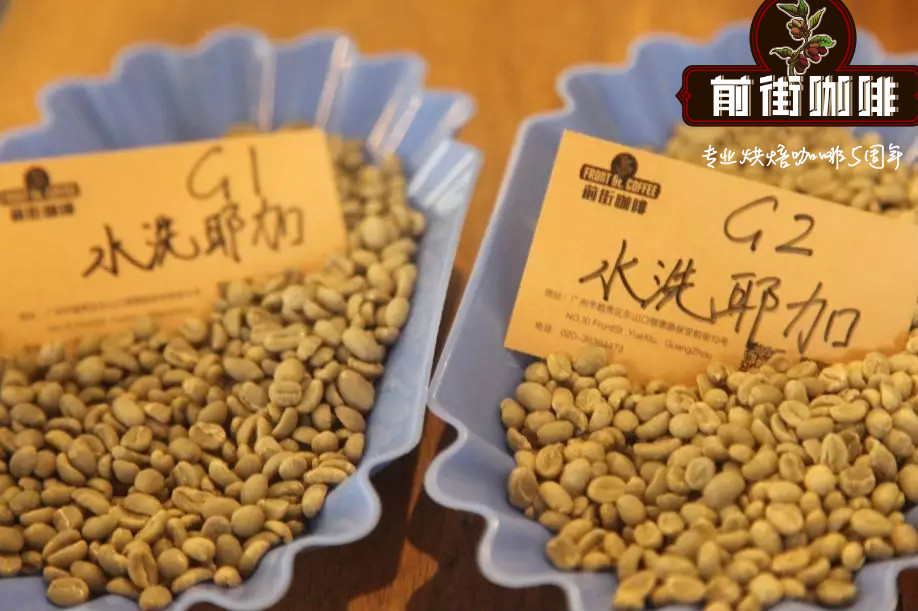
Professional coffee knowledge exchange more coffee bean information please follow the coffee workshop (Wechat official account cafe_style)
In recent years, many emerging small producing areas or cooperatives in the Sidamo and Yegashev producing areas of Ethiopia will be sold in the international market under the name of their own cooperatives or farms, which shows confidence in their own coffee. Hope to establish brand and loyalty in the international coffee market, coffee farmers insist on collecting mature coffee beans and strictly handle every process. Both natural washing and natural tanning are outstanding, with an unexpected extremely fragrant aroma and excellent taste. I think this is why Ethiopian coffee is expected by coffee fans every year. For example, the Dutch government-assisted Red Cherry Project (Operation Cherry Red) impressed the world with the magnificent aroma of strawberry cookies in 2008 and Cambedo Manor in 2009, which has been reinforced by sun-dried beans produced in Ethiopia in recent years.
Ethiopian coffee is graded as G1.G2. Water-washed beans G1 belongs to the highest level of water-washed beans, while G3.G4 belongs to the highest level of sun-dried beans G3. There are five grades of raw coffee beans in Ethiopia. The number of defective beans with 300 grams as standard is as follows:
Grade1 0Murray 3
Grade2 4muri 12
Grade3 13Murray 25
Grade4 26Murray 45
Grade5 46muri 90
So what's the difference between G1 and G2? Qianjie Coffee compares their flavors as follows:
* Cup test
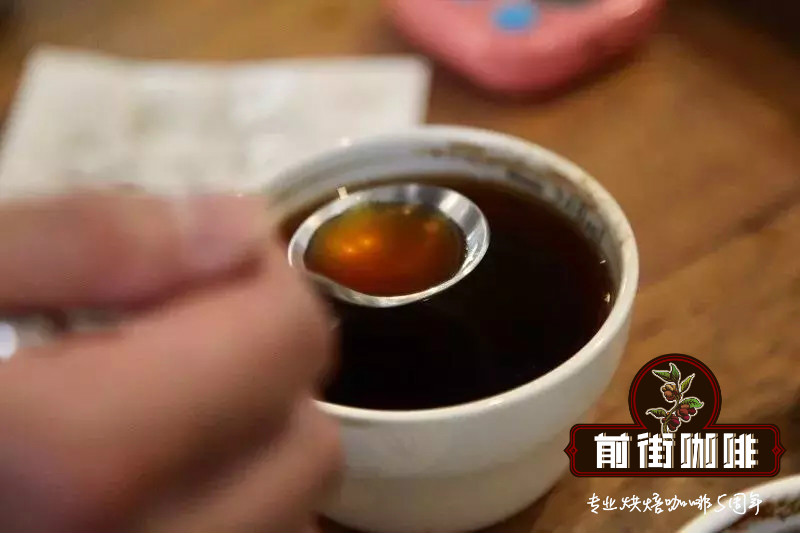
[washed Yega G1] Jasmine, ginger, lemon, grapefruit, plum, Tieguanyin
[washed Yega G2] Jasmine, lemon, citrus, tea
* hand punch
Parameters: water temperature 91 ℃, grinding degree BG 5R (Chinese standard 20 sieve pass rate 58%), powder / water ratio 1:15.
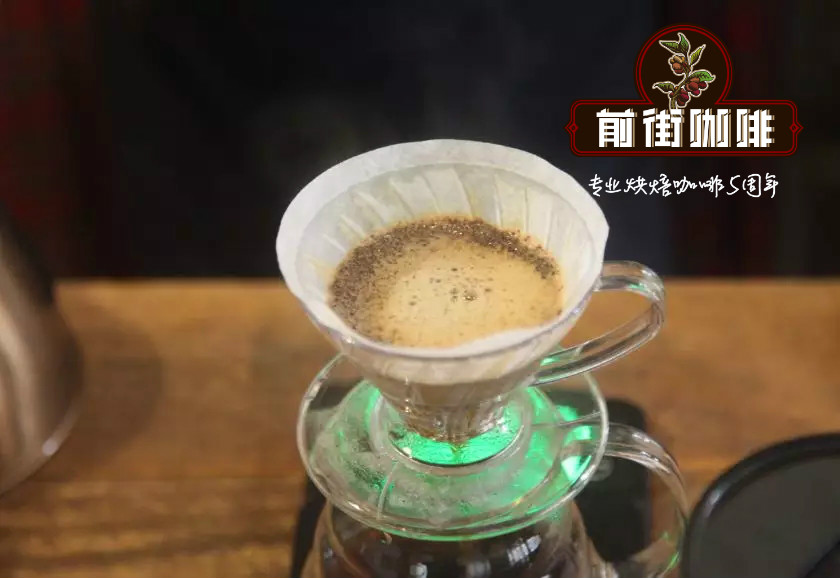
Technique: segmented extraction. 35 grams of water is steamed for 30 seconds, the small flow is quickly injected to 130 grams, and when the water level is about to expose the powder bed, continue to inject water to 225 grams, and remove the filter cup when the water level is about to expose the powder bed.
[washed Yega G1] it smells of jasmine, lemon and caramel, with soft citrus acidity and cream on the palate, lemon acidity in the middle, sucrose and oolong tea finish.
[washed Yega G2] it smells of jasmine and citrus acid, with lemon, grapefruit acid and black tea on the palate, with a hint of cocoa at the end and caramel.
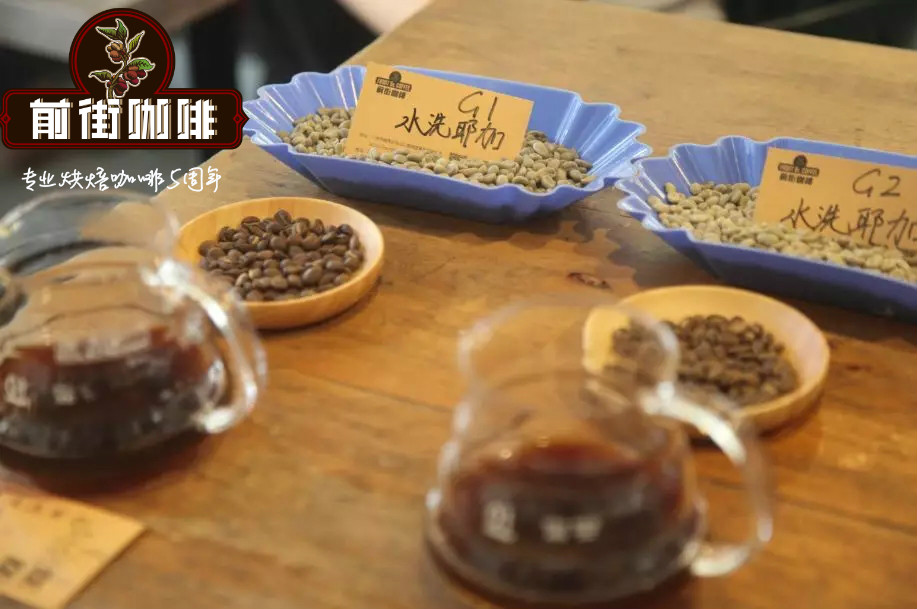
Qianjie coffee compared with two water washed Yega, from raw beans and cooked beans, it is obvious that the particle size of [G1] beans is relatively symmetrical, while [G2] beans can obviously see uneven and defective beans; in the process of baking, you can obviously smell the aroma of [G1], while [G2] will be slightly inferior.
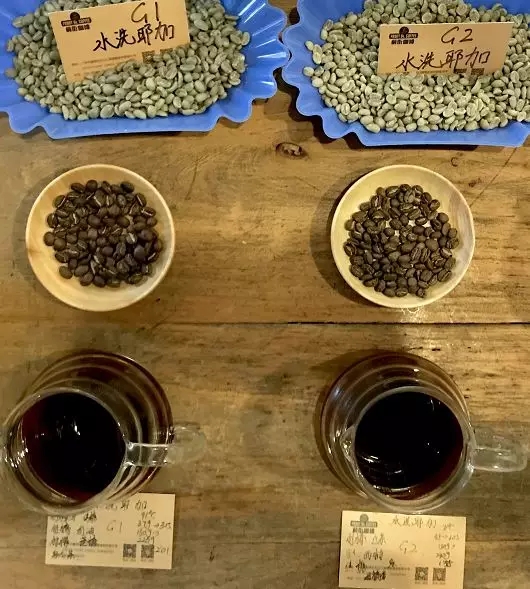
In terms of flavor, in fact, [G1] [G2] is relatively close, mainly lemon, citrus, jasmine and other flavors, but by contrast, the flavor level of [G1] is rich and clear, while the flavor level of [G2] is less and less clear, with some miscellaneous smell.
About Yirgacheffe?
Yega Xuefei grows in the Sidamo producing area of southwestern Ethiopia. Coffee beans belong to small and medium-sized granules. The color of raw beans is light yellowish green and the bean shape is complete and beautiful. It has a certain representative position in the boutique coffee in East Africa.
The name Yegashev means a single ethnic settlement. The producing area is located in the Sidamo planting area in south-central Ethiopia, at an elevation of more than 2000 Michael Mountain. The Gedegna people live in Ethiopia, which is a small number of washed Arabica coffee beans. After medium baking, it shows a perfect sour fruit taste, with aromas similar to scented tea and lemon peel.
Now under the system of ECX, the area of Ye Jia Xuefei is divided into four communities, namely: Yirgachefe, Wenago, Kochere and Genlena abay. The soil here is fertile, with an average altitude of 1800 meters above sea level. It is a high-altitude area with a large temperature difference between day and night. The production mode of each district, coupled with the local unique native tree species coffee garden, makes each batch of coffee beans have different flavor, quite unique and unique.
Originally, Yejia Xuefei was famous for its water washing treatment, but now it has been warmly welcomed by the market because it is rich in sweet berries. Also because of the substantial increase in demand, so the sun production of Yega Chuefei has also increased a lot.
About the misty valley (Misty Valley)?
Growing in a misty valley, this bean has a beautiful name. Many coffee trees are planted in the small town of Yegashafi in Ethiopia's Sidamo province. Instead of the sun treatment used by Sidamo ten years ago, farmers in the misty valley turned to washing coffee beans, which also made Yega Xuefei famous. Now, Yejia Xuefei is not only a place name, but also a familiar pronoun for coffee beans.
According to local elders, although Yega Xuefei in the misty valley is famous for its water washing treatment, it is still dominated by traditional sun treatment. because local residents think that sun treatment can give coffee beans an unspeakable flavor. Because of Yejia Xuefei's fame, Suoguo incorporated the coffee-making ceremony into the feast for foreign guests. They did not care whether the beans were complete and plump, but directly roasted the beans on an iron plate. As for the taboo of baking beans, there is no need to ask for more at the moment. Under this traditional and wonderful ceremony, even if the beans have different colors, they can still cook an unforgettable taste.
END
Important Notice :
前街咖啡 FrontStreet Coffee has moved to new addredd:
FrontStreet Coffee Address: 315,Donghua East Road,GuangZhou
Tel:020 38364473
- Prev

Description of the characteristics, origin and flavor of Yejia Xuefei coffee beans
For the exchange of professional baristas, please follow the coffee workshop (Wechat official account cafe_style) yirgacheffe about Yirgacheffe? Yega Xuefei grows in the Sidamo producing area in the southwest of Ethiopia. Coffee beans belong to small and medium-sized granules. The color of raw beans is light yellowish green and the bean shape is complete and beautiful. It has a certain representative position in the boutique coffee in East Africa. Now
- Next

Characteristics of Information Flavor description and processing method in Yejia Fischer producing area
The exchange of professional baristas please pay attention to the coffee workshop (Wechat official account cafe_style) Kochere is a small production area about 25 kilometers southeast of Yega Sheffield. The coffee beans harvested come from locally grown small coffee farmers, which are composed of a large number of small coffee farmers. The average farming area of these small farmers is about 1 hectare, planting altitude.
Related
- Detailed explanation of Jadeite planting Land in Panamanian Jadeite Manor introduction to the grading system of Jadeite competitive bidding, Red bid, Green bid and Rose Summer
- Story of Coffee planting in Brenka region of Costa Rica Stonehenge Manor anaerobic heavy honey treatment of flavor mouth
- What's on the barrel of Blue Mountain Coffee beans?
- Can American coffee also pull flowers? How to use hot American style to pull out a good-looking pattern?
- Can you make a cold extract with coffee beans? What is the right proportion for cold-extracted coffee formula?
- Indonesian PWN Gold Mandrine Coffee Origin Features Flavor How to Chong? Mandolin coffee is American.
- A brief introduction to the flavor characteristics of Brazilian yellow bourbon coffee beans
- What is the effect of different water quality on the flavor of cold-extracted coffee? What kind of water is best for brewing coffee?
- Why do you think of Rose Summer whenever you mention Panamanian coffee?
- Introduction to the characteristics of authentic blue mountain coffee bean producing areas? What is the CIB Coffee Authority in Jamaica?

